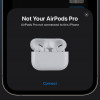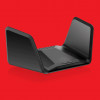Linux In The Palm Of Your Hand
Playing the underdog is familiar territory for Linux, but now the open-source community prepares to go up against PDA leaders Palm and Microsoft. To make inroads in the market, Linux will need to provide a standardized platform for business applications. When Greg Richards went looking for a wireless handheld to connect his 3,500 field engineers, he chose the Linux operating system to power it. "We needed a tool that could handle a wide range of wireless carriers, run custom Java applications, and provide significant amounts of local data caching," says Richards, senior manager for global support operations at Sun Microsystems.
Richards dismissed market leaders Palm OS and Windows CE. "Palm OS simply didn't have the horsepower, and Windows CE tends to be slow running Java on certain processors," he says.
The only problem was that there was no commercially available Linux PDA in June 2000, when Richards started the project. Sun solved that problem by outsourcing hardware and software development to other companies. Symbol Technologies Inc.'s model 2700 PDA and a custom port from Linux provider Red Hat Inc. formed the basis of the platform.
But even today, commercially available Linux PDAs and associated application support are hard to come by. "We're at the beginning, the birth of Linux on PDAs," says Bradley LaRonde, CEO of Agenda Computing Inc., which in March became the first company to ship a Linux PDA to the U.S. market. While LaRonde, a staunch open-source advocate, sees the closed-source licensing of Palm OS and Windows CE as their primary drawbacks, he also questions Palm's ability to move ahead.
"Palm is stuck with operating-system technology that was out-of-date when they wrote it," LaRonde says. "Palm's applications are built with the limitations of the Palm PDA. Things like the pointer and memory-management schemes are inherently limited."
But with an estimated 85% share of the PDA market, Palm's consistency and simplicity have served it well despite its lack of robust multitasking, a high-resolution screen, and CPU horsepower. Palm has been careful to maintain a consistent API with the Palm OS and has pretty much standardized on the Motorola Dragonball processor for hardware implementations. As a result, applications have flourished.
In contrast, Linux PDAs are barely on the map, but their potential--seen as an offshoot of the increasingly popular embedded Linux market--has been noticed by the market leaders. "The pluses of Linux are obviously this wonderful organic developer community," says Michael Mace, Palm's chief competitive officer.
Major industry players are coming into the Linux handheld fold. Compaq, which sells the popular iPaq PDA running Windows CE, is expected to have a Linux port available this fall. Hewlett-Packard, which is using Linux for its Intel Celeron-based Digital Entertainment Center, is expected to unveil a Linux PDA this fall, too. And Sharp Corp., the PDA market leader in Japan, will ship its Java/Linux PDA globally in the fall.
The lack of a consistent Linux implementation could hold back adoption by businesses. Companies such as Agenda have done their own Linux port, while others have chosen to license a Linux port such as Lineo Corp.'s Embedix, which will appear on Sharp's Java/Linux PDA. The result is that developers will be faced with a different set of APIs and libraries for each device.
"There's no major Linux PDA operating-system vendor setting standards for key items like user interface, power management, and synchronization," Gartner analyst Ken Dulaney said in a recent report on Linux PDAs. "What we have with Linux, from a compatibility standpoint, is a more-advanced version of DOS."
In the embedded market, where there are many processors, screen types, and hardware interfaces in use, Linux has proved attractive, despite the proliferation of different Linux development environments. For ZF Micro Devices Inc., makers of the innovative ZFx86, a single-chip x86 PC for embedded devices, Linux has become the development environment of choice. "Of people in the design phase, the vast majority--60% to 70%--are using Linux," says David Feldman, president of ZF Micro Devices.
Linux for embedded systems is attractive for two reasons: ownership of source code and cost. "Ownership of the source is important because users are going to have to support these products for seven to 10 years out in the field," Feldman says. Cost is also a concern. Closed-source operating systems such as Windows CE and Palm OS typically charge per-unit licensing fees. In contrast, Linux developers can start from free open-source code or from a developer environment such as Embedix, which typically don't charge per-unit royalties.
For embedded Linux devices that won't rely on application developers to generate revenue, a Linux API standard isn't critical. In the PDA market, however, where success will depend on developers creating applications, having numerous versions of Linux, each with different APIs, is commercial suicide.
To address the problem, the 124-member Embedded Linux Consortium, a vendor-neutral trade group dedicated to embedded Linux issues, unveiled the Embedded Linux Platform Specification in April. The ELPS is a base set of APIs that will "help to establish Linux as a viable alternative to other single-vendor embedded solutions," consortium chairman Inder Singh says.
The ELPS currently is available only to consortium members as a draft specification. It will be based in part on the Linux Standard Base, a standard for the Linux desktop and server markets that hasn't been released yet. While the Linux Standard Base nominally specifies X-Windows as the graphical user interface for desktop and server versions of Linux, it's not clear yet how the consortium will handle GUIs for PDAs.
Agenda uses the Fast Light Tool Kit, a set of open-source GUI libraries, coupled with a stripped-down port of the xlib libraries from Xfree86, the widely used X-Windows GUI that's shipped with many desktop Linux distributions. But other embedded Linux developers make use of non-X-Windows GUIs.
The lack of a standard set of APIs for embedded Linux will affect the development of productivity applications. But if embedded Linux can standardize, the robustness of the Linux operating system could help it gain market share.
A recent report suggests that Windows CE has sold better than Palm in business markets largely because of its superior operating-system capabilities and higher-performance hardware. This has helped Windows CE gain market share over Palm in the past year, though Windows CE still holds only a 6.1% market share, according to NPD Intelect, a market-analysis firm. Other PDA contenders, such as Research In Motion Ltd.'s RIM OS and Symbian Ltd.'s Epoc, account for 8.9%.
Many PDA vendors, including Palm and Compaq, are standardizing on the ARM Holdings Ltd. CPU. On the software side, there's also a growing support for Java on various handheld devices. Sun's Java 2 Micro Edition is widely supported and is the basis for application development on the forthcoming Sharp Linux PDA and RIM's BlackBerry.
ARM processors and Java could become the PDA equivalent of the Wintel standard. Widespread adoption of J2ME by PDA vendors could further improve the chances for Linux handhelds because Linux has excellent support for Java and would benefit from its application portability.
It's important to keep in mind that Linux PDA vendors are targeting developers, not users. "Our main market right now is people who care it's Linux," Agenda's LaRonde says. "It's the early-adopter market: value-added resellers who have Linux infrastructure in place and want to extend their solution into the PDA market and consumers who care about Linux. The same ones who are buying Red Hat and are installing it on their boxes."
Skepticism and few commercial products are nothing new for Linux. The wild cards are the developer community and standards. The embedded Linux spec needs to be finalized and widely adopted. If the PDA industry converges on ARM and Java, that will give weight to the open-source approach. Then Linux PDAs could be transformed from newcomer to contender.









































































